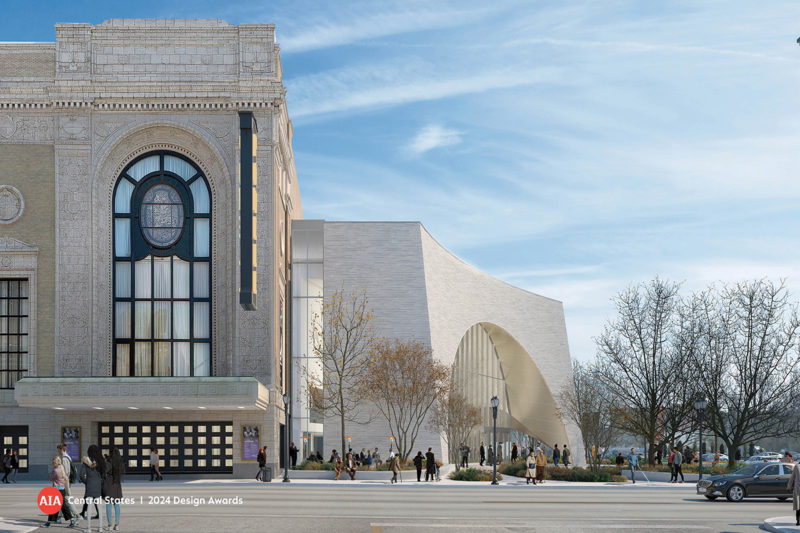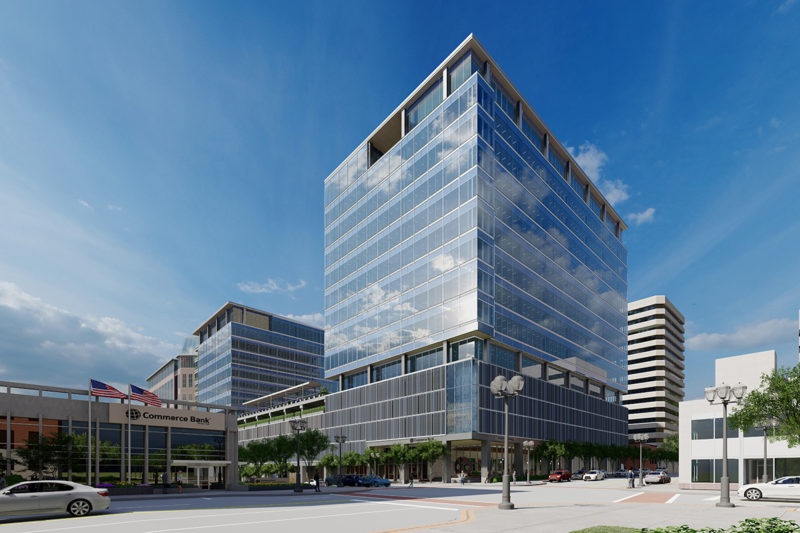As the new museum at the base of the Gateway Arch is completing construction, the Arch grounds will once more be the most popular tourist destination in St. Louis. It’s logical to think that St. Louis is synonymous with the Gateway Arch – the iconic, stainless steel monument to westward expansion designed by Finnish-American architect Eero Saarinen in 1947. The Arch may be an icon for the city and many times act as its logo, but it does not fully represent the cultural and civic fabric of St. Louis that we want the world to know. St. Louis is home to many world-class cultural and civic institutions that are landmarks and anchors for our neighborhoods and business districts. All the while, they make significant contributions to the collective research, culture and historical context of America. A couple of key institutions come to mind: The Missouri Botanical Garden, the Pulitzer Arts Foundation and Forest Park. As a design firm committed to serving our local community, it has been our privilege to work with many of these important cultural institutions.
The Missouri Botanical Garden, one of the oldest botanical gardens in the United States, opened to the public in 1859 and began its horticultural displays combined with education and research. Over 150 years later, the Missouri Botanical Garden is a National Historic Landmark and is one of the leading institutions in the conservation of plants in the world. In addition to its extensive plant collections, the garden is the setting to many significant pieces of architecture. In 2011, Christner was selected to be the architect for the restoration of The Linnean House, a greenhouse original to the grounds in 1882 and the oldest continuously operated greenhouse west of the Mississippi. This was a comprehensive restoration in which great care was taken to preserve the high-quality craftsmanship, historic architecture, and original footprint. Repairs included the building’s ornate masonry, wood windows and doors, and replacement of the glass roof. Replacing the glass roof required extensive research to preserve the historic design, but comply with current codes and safety regulations. The all-glass roof utilizes lapped, laminated glass, using a thicker interlayer to resist breakage from hail. The project was capped with a reproduction of the original ornamental roof crest that had been removed at some point in the building’s history. The building has been fully restored as it was in 1882 and a wonderful place to experience the garden’s sub-tropical plants, orangery and Camellia tree collection.

The last original structure to be renovated in the garden is currently under construction. Christner is currently working with the garden on the restoration of Henry Shaw’s Museum. This facility is slated to open in the spring of 2018 as the Stephen and Peter Sachs Museum. The project includes restoration of the Georgian structure designed by St. Louis architect George I. Barnett in 1859 and an addition that includes a fully accessible entrance, elevator, and expanded restrooms. The building was the original home of the garden’s library, herbarium and natural history specimens. The building’s uses have evolved many times over the past 150+ years from laboratories and offices to restaurants and computer classrooms. The restored building will be a landmark in the Victorian district of the garden and include new exhibit spaces for revolving displays of the artifacts of ethnobotany, economic botany, endangered plants, and the garden’s history. A restored ceiling mural, which was hidden from view by a plaster ceiling for decades is being restored. The building will also serve as a future event space to the public.
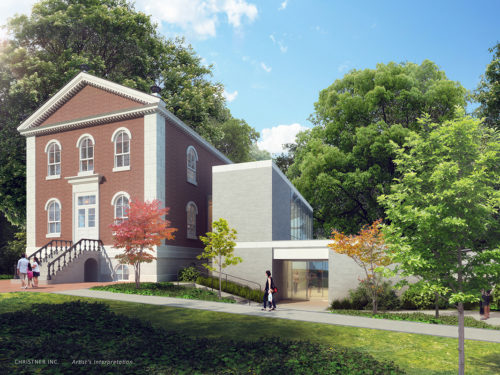
Another renowned St. Louis landmark is The Pulitzer Arts Foundation building in Grand Center – the visual and performing arts district in St. Louis. The Pulitzer was founded on the belief of “direct experiences with art.” As a result, art and architecture are presented simultaneously, “valuing contemplation, close looking, and civic engagement, the Pulitzer brings art and people together.” The Pulitzer was designed by Pritzker Prize winning, Japanese architect Tadao Ando and was his second building commission in the United States. Christner was the architect of record for this building working closely with Tadao Ando and his office to provide technical design support, construction documentation, and construction administration services. The American Institute of Architects (AIA) recognized this project with a 2003 AIA Central States Honor Award for Architecture, 2003 AIA St. Louis Honor Award for Craftsmanship, 2002 AIA St. Louis Honor Award for Architecture and a 2001 ACI Concrete Award. The building includes exhibit spaces, library, and offices that is meticulously detailed and uses space and daylight to create a moving experience from within. In 2014, the lower level was renovated for additional gallery space to complete Ando’s original vision.
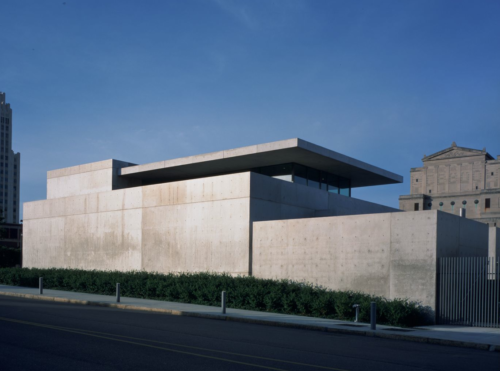
The conversation about St. Louis landscape and architecture would not be complete without mentioning Forest Park. It is one of the largest public, urban, parks in the United States, covering nearly 1,293 acres, 400 acres more than Central Park in New York. Forest Park opened in 1876 and was home to the 1904 World’s Fair which drew more than 20 million visitors from around the world. Today, it’s home to the St. Louis Zoo, the St. Louis Art Museum, the Missouri History Museum, the St. Louis Science Center, and the Municipal Opera (“The Muny”). In 2002, Christner was commissioned to restore the 1936 conservatory building known as the Jewel Box. This Art Deco greenhouse, was designed by the City of St. Louis’ Chief Engineer, William C. Becker. The building is on the National Register of Historic Places therefore the renovation strategy required to preserve the Art Deco style and original footprint. The interior of the building was completely renovated and reconfigured to allow maximum flexibility in floral displays, wedding receptions, and other special events. The reconfigured interior space includes a catering kitchen, bride’s room, furniture storage areas, and restrooms tucked behind a wall that reinterprets the historic front facade of the building. The reflecting pond along the central axis of the building is accented by a series of arched fountains and can be drained to reveal a limestone paved surface that can be used to accommodate additional tables and seating. This restoration gave the Jewel Box a renewed purpose.
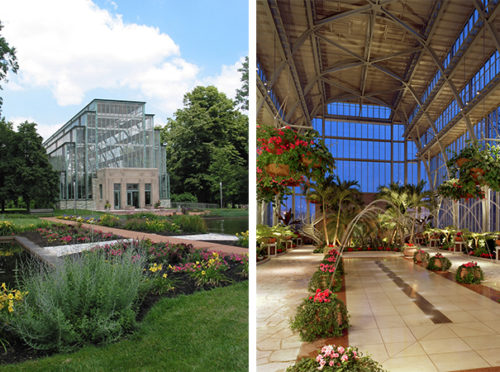
Now is the time to leverage the draw of the Gateway Arch to encourage visitors to go beyond the Arch and explore all of St. Louis’ landmarks. It is also the time to recapture the attention of our region. The quality of our civic and cultural institutions are tourism drivers but more importantly they help define how we talk about quality of life as St. Louisans. It is these institutional anchors and cultural buildings that shape our built environment, define the experiences of those who visit or live here and make the City of St. Louis a place we want to share.
As a business located in and serving the St. Louis region, we are passionate about helping to preserve and enhance our community and its landmarks through smart thinking and great design.

